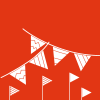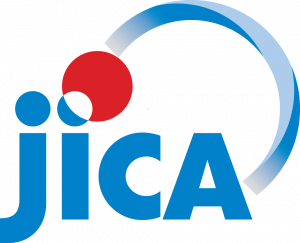When in Bohol, revel with the locals and share their passion for merrymaking. Take part of the colorful festivals all over the island – experience the array of celebrations and their own version of a Mardi Gras parade that will let you indulge in the sight of bright, cheerful hues, and dance with the constant beating of drums and other local instruments.
- Sandugo Festival
This month-long festivity honors the Blood Compact between Rajah Sikatuna and Miguel Lopez de Legazpi, an important Philippine historic event that happened in Bohol. Celebrated annually in the month of July, it features an agro-industrial fair, cultural and historical showcase, sports events, a beauty pageant, balls and dances, entertainment shows, and streetdancing which culminates with the re-enactment of the blood compact or Sandugo. - Ubi Festival
Giving homage to to the ube crop as the “agro-historical-geographical-religious” symbol of Bohol, the Ubi Festival features an exhibit, ube contest, an agri-business investment opportunities seminar and a cultural show. Ubi festival is celebrated every second week of January. - Bolibongkingking Festival
Celebrated every 23rd-24th of May in the Municipality of Loboc, this is a music and dance festival of folklore and traditions from the centuries-old history of Loboc. Its name traces back from the sound and rhythm of local drums known as “gimbaw” which are used as musical accompaniment to the dance ritual of supplication by devotees in front of the image of Loboc’s second patron saint, Our Lady of Guadalupe. - Pahinungod Festival
A 10-day fiesta in the month of May, this event commemorates the Municipality of Calape’s rich ancestry and devotion to the San Vicente Ferrer, its town patron saint, and the Calapehanons “pahinungod” (offer) to come home annually. Highlights include Search for Miss Calape, a One-Night Dance Concert and a street dancing. - Sinugboan Festival
Sinugboan Festival is celebrated every 27th day of May in the Municipality of Garcia Hernandez. “Sinugboan” is a term closely related to the Cebuano word ‘sugbo’ meaning to wallow. The use of the vernacular past tense “sinugbo” denotes an event of historical import. The festival highlights the town’s annual commemoration of her foundation day. Activities include agro-industrial fair, recognition program for achievers, various games and street dancing competition where the storyline focuses on the creation and establishment of Garcia-Hernandez. - Sinu-og Estokada Festival
The Sinu-og Estokada Festival of the Municipality of Jagna is held every 29th of September. The festival portrays the victory of the Christian militia over the marauding pirates and likewise depicts the celestial conflict of good and evil. Estokada means fencing or fighting with bladed instruments. The fencing movements were modified to keep in time with a regular beat beat. The street dancing participants are costumed either as good or rebellious angels. - Hudyaka sa Panglao
The Hudyaka sa Panglao takes place on August 28th every year in the grounds of its parish church. The ten barangays of the municipality compete fiercely with each other to see which is the best of the best. Its own dance festival brings back ex-Panglao residents from all over the world, and instead of making a day of it, the music and dance lovers ofPanglao try and make a whole week of it…and more. Actually, they take nine days and the whole town has a festive atmosphere with parties all over the place. - Katigbawan Festival
What distinguishes Catigbian from other towns is its annual festival, the Katigbawan. A week-long festival comprising various activities like carabao-racing, hog-catching, agro-air, motorcross and a search for Miss Katigbawan. This affair happens only in June. - Pana-ad sa Loboc
In observance of the Semana Santa or Holy Week, the Lobocanons read the “Pasyon” and do a penitential procession through the way of the cross that culminates at “Cruz Daku,” a huge cross 80 feet in height which is on top of the highest hill of Loboc where one can view the neighboring towns, including Tagbilaran City. - Pandayan Festival
The Pandayan Festival is held at Barangay Lonoy, Jagna to celebrate the canonical erection or the parochial anniversary of St. Joseph the Worker Parish. All eight upland barangays of Jagna which is under the parochial jurisdiction of the Parish participates in the activities. Activities include a nine-day novena in honor of the patron saint, a procession of the image of St. Joseph the Worker, Carpentry and Handicrafts Fair, an inter – barangay basketball tournament and last but not least, the street dancing competition. Celebrated every 27th day of February. - Sambat Mascara y Regatta Festival
The festival is celebrated every 1st Saturday of December in honor of Loay town’s second patron, St. Francis Xavier. Colorful activities are lined up, like the agro-industrial fair, group masked street dancing, drum and bugle competition, boat racing along the river, and many more. The event is highlighted by a fluvial parade of the image along the river. - SidlaKasilak or Festival of Lights
This annual festival of lights honors the “Birhen sa Kasilak” (Our Lady of Light), patroness of Loon. It also expresses the enduring qualities of the town. The Visayan words “sidlak” (rise) and “silak” (shine) best describe the character of Loonanons as they conquer life’s adversities and make the best out of their inherent talents and capabilities. The various sectors of the community mount sociocultural activities during the ten-day celebration that starts on August 30 until September 8. Highlighting the festival is a fluvial procession followed by street dancing and dance of lights competitions. Other contests, all requiring the use of light, are also mounted. SidlaKasilak was inspired by past religious processions in Loon when the faithful would light candles in colorful hand-held lanterns or “parow”, the local version of the “parol”. - Suroy sa Musikero
A yearly tradition held by local musicians of Loboc from 25th of December to 2nd of February, Suroy sa Musikero is celebrated to elevate the spirit of Christmas as well as to entertain the people. It has been practiced for decades in celebration of the 40 days after Christ’s birth and culminates in the Feast of Candelaria or Candelmas Day. Feast of Candelaria is also known as the Feast of the Presentation of Christ in the Temple.Suroy is a local term wich means “walk” or “parade” while musikero means “musician.” Suroy sa Musikero trans-literally means “parade of musician.” The Suroy sa Musikero is done by musicians both young and old. The band has around 25 members and composed of three brass bands. The musicians would carry and play brass trombones, percussions, bass horns, clarinets, and trumpets as they play Christmas carols of each assigned area. Musicians would also play Christmas carols to families of the host area. Some of the songs played by the musicians include Kuradong and Dalaga sa Baybayon. Suroy sa Musikero is done by homegrown musicians. Each musician had to undergo a mentoring tradition referred to as “tiple.” This is to ensure that the music tradition in Loboc is passed on to the next generation. - Bohol Fiestas
Like in other Philippine provinces, a fiesta is a hallmark of Bohol, celebrated by a town or a barrio each day for the whole month of May in honor of its patron saint. Characterized by an abundance of food and merriment, this is also the time for family reunions when family members from places far and near gather to keep in touch with loved ones.Traditionally, a novena is made each day for 9 days before the fiesta, and nightly activities or presentations are usually done. During the vesperas or vesper day, the day before the fiesta, a procession is held. A misa pontifica or pontifical mass is done at church during the day itself, followed by a smorgasbord of sumptuous meals at each home. - Tigum Bol-anon sa Tibuok Kalibutan or TBTK
This summons all Boholanos from all over the world to gather and the name for such a grand event. This annual gathering of the locals coincides with the Sandugo Celebration in July.














